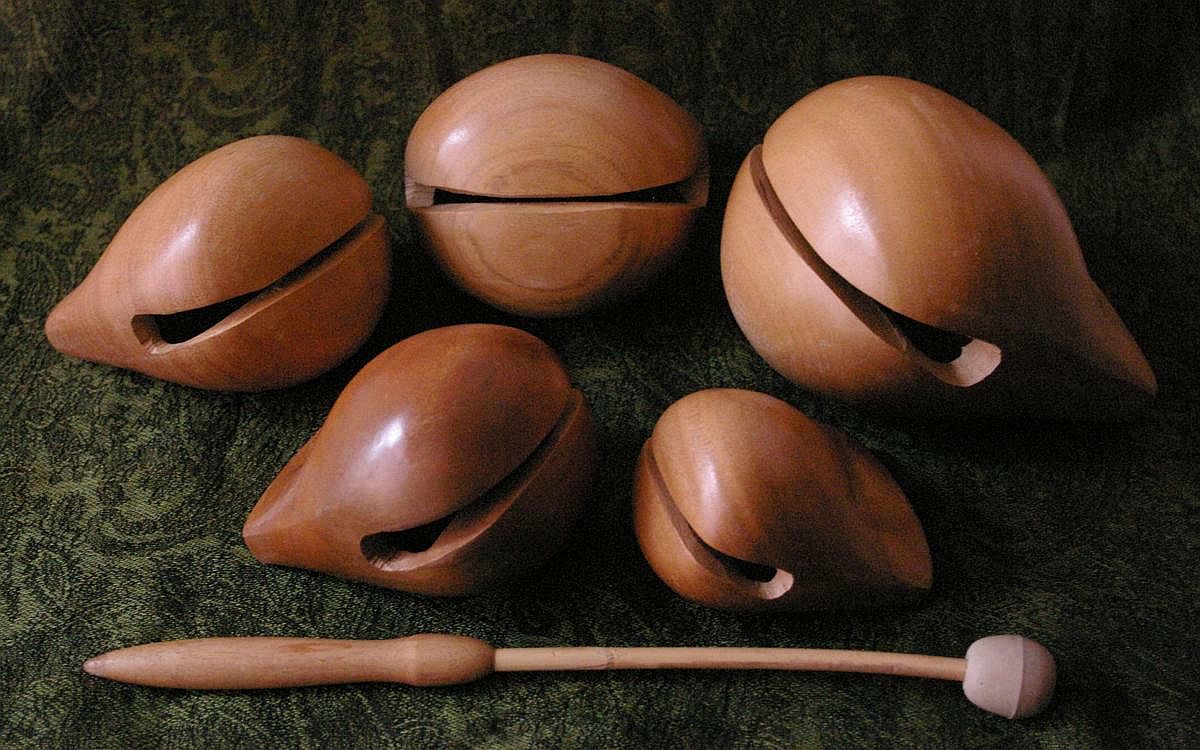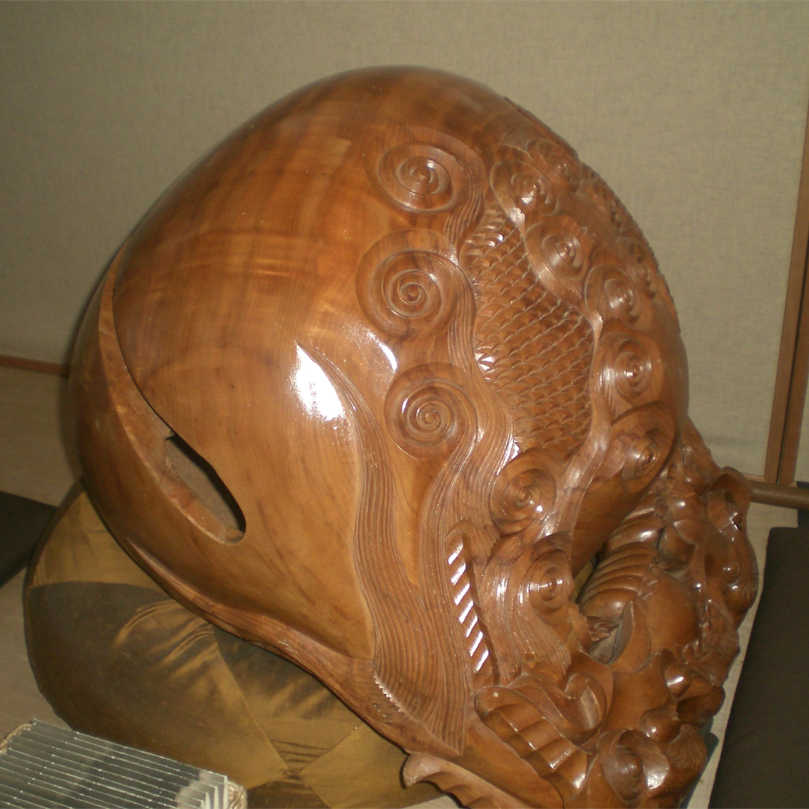The legend of the wooden fish
771 views · Organized by 夏浩东 on 2022-02-08
"Wooden fish" was originally created and popularized by Chinese Buddhism. It is one of the important "dharma tools" of Buddhism. In ancient times, it was called "wooden fish drum", "fish drum", or "fish plate". In Buddhist allusions, there are many legends about wooden fish.
In the Buddhist scriptures, there is a famous "fish belly" story, which says: In a Brahmin family in India, there was a child named Bokura. When he was very young, his biological mother died. His stepmother was very mean and often abused him.
Once, while his father was away, the stepmother threw him into the river and was swallowed by a big fish. This big fish was caught by a fisherman and brought to the market to sell. It just so happened that Bokura's father bought the big fish and took it home to prepare it for cooking.
Just as he was about to cut the fish with a knife, Bo Kuluo sang in the fish's belly: "May my father rest in peace, and don't hurt my son." His father quickly cut open the fish's belly lightly and rescued him. It is said that Bokura went through all kinds of hardships and finally became a disciple of Sakyamuni.
After this story spread to China, it was interpreted as another version. The plot of the story is basically the same, but it is stated as follows: When Master Xuanzang, an eminent monk in the Tang Dynasty, returned from the Western Regions, he passed through the land of Shu, met an elderly man, and went to his home to Huazhai. The elder's son was framed by his stepmother, thrown into the river, and devoured by a large fish.
It happened that Master Xuanzang wanted to eat fish that day, so the elder had to go out and buy a big fish. When cutting the fish, he rescued his baby from the belly of the fish. Master Xuanzang said: "This is exactly the karma of this child's long-cherished wish to keep the Buddhist precept of not killing, so even though he is swallowed by a fish, he will not die." The elder said, "How can I repay the kindness of the fish?" Xuanzang said. The commander said: "The fish sacrificed to save the child. It should be carved into the shape of a fish with wood, hang it in the Buddhist temple, and strike it every time you eat fast food, so as to repay the virtue of the big fish."
It is said that this is the origin of the use of wooden fish in Chinese Buddhist temples.
In the Buddhist scriptures, there is a famous "fish belly" story, which says: In a Brahmin family in India, there was a child named Bokura. When he was very young, his biological mother died. His stepmother was very mean and often abused him.
Once, while his father was away, the stepmother threw him into the river and was swallowed by a big fish. This big fish was caught by a fisherman and brought to the market to sell. It just so happened that Bokura's father bought the big fish and took it home to prepare it for cooking.
Just as he was about to cut the fish with a knife, Bo Kuluo sang in the fish's belly: "May my father rest in peace, and don't hurt my son." His father quickly cut open the fish's belly lightly and rescued him. It is said that Bokura went through all kinds of hardships and finally became a disciple of Sakyamuni.

After this story spread to China, it was interpreted as another version. The plot of the story is basically the same, but it is stated as follows: When Master Xuanzang, an eminent monk in the Tang Dynasty, returned from the Western Regions, he passed through the land of Shu, met an elderly man, and went to his home to Huazhai. The elder's son was framed by his stepmother, thrown into the river, and devoured by a large fish.
It happened that Master Xuanzang wanted to eat fish that day, so the elder had to go out and buy a big fish. When cutting the fish, he rescued his baby from the belly of the fish. Master Xuanzang said: "This is exactly the karma of this child's long-cherished wish to keep the Buddhist precept of not killing, so even though he is swallowed by a fish, he will not die." The elder said, "How can I repay the kindness of the fish?" Xuanzang said. The commander said: "The fish sacrificed to save the child. It should be carved into the shape of a fish with wood, hang it in the Buddhist temple, and strike it every time you eat fast food, so as to repay the virtue of the big fish."
It is said that this is the origin of the use of wooden fish in Chinese Buddhist temples.

Involving musical instruments
Wooden fish (pinyin: Mùyú) is a kind of wooden percussion instrument. The common fish-shaped wooden fish is shaped like a round sphere close to a fist, and the middle part is hollow, which is used for sound resonance and amplification. There is a sound hole on one side of the sphere, which has the same function as the F-shaped hole of a violin. It allows the amplified sound to spread. on the shelf. The method of playing is to use a drum stick or a small wooden hammer to hit the resonance area on the outside of the instrument to make a sound. The size of the wooden fish can be of different sizes, the larger the volume, the lower the pitch.
Guess you like
Organized by 肖毅 on 2022-03-22
I'm used to reading fashion magazines and trendy brands, but today I'll show you something different. This is the twenty-one band from the Qing Dynasty that swept the world. You must not have thought that this Qing Dynasty band had debuted in the C position and led the fashion. Just the folk music playing and painting have been sold at home and abroad.
read >>
 渝公网安备 50010702504639号
渝公网安备 50010702504639号